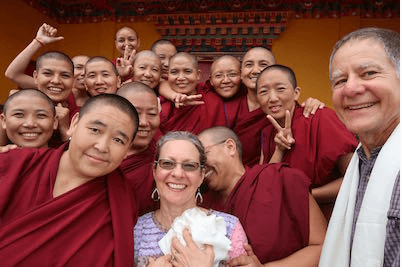
In 2006, neurobiologist and cognitive scientist David Presti was at Esalen giving an evening presentation on the human mind and brain. By that time he’d been teaching Esalen workshops for nine years, leading seminarians deep into the confluence of neuroscience, psychopharmacology and more elusive aspects of mind studies.
“I was talking about near-death and out-of-body experiences, and how it was impossible to explain those things based on what we knew about brain science," David shares. "I cited a couple of recent studies, and one of the people in the room said, ‘You know, the people who did that work are here at Esalen right now, in a conference with [Esalen co-founder] Michael Murphy.’ I was so surprised, and the next day I was in the Lodge for lunch, and I turned around in line and Michael Murphy was right behind me. So I introduced myself and Michael invited me to join in on the last day of their conference, which was sponsored by Esalen’s Center for Theory & Research.”
This fortuitous encounter led David to become an ongoing CTR participant, and his recently published book, Mind Beyond Brain: Buddhism, Science and the Paranormal, is an anthology of case studies with numerous CTR contributors. David’s curiosity about the nature of the mind and reality is palpable, and infuses his Esalen workshops with a spirit of exploration and the sense that open-mindedness and curiosity are indeed an important part of the scientific method.
“I try to think broadly about the limitations of our current ways of studying mind and how we might expand our science in empirical ways,” says David, who teaches neuroscience at UC Berkeley. “Right now the primary way mainstream science studies mind is to study brain and body. There is a rather naïve equation that whatever the mind is just equals something in the brain. Period. There’s nothing beyond that. I think that’s already running into limitations.”
David’s work and interests — whether exploring the therapeutic value of psychedelics or new approaches to phenomena unexplained by current science — have given him the direct opportunity to chip away at those limitations. One project has taken him all the way into monasteries of India, Nepal and Bhutan.
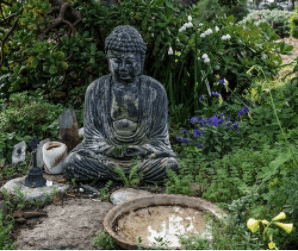
“In the early 1980s, the Dalai Lama proposed that utility might come from a conversation between Tibetan Buddhism and the scientific community, because both are interested in these big questions about the nature of mind and reality — they’re just coming from different world views.” Through a program called Science for Monks and Nuns, David and Kristi Panik, the psychiatrist and meditation teacher who co-leads Esalen workshops with David and is also his wife, have been teaching neuroscience to Buddhist monks and nuns for more than a decade.
“As students, the monastics are very engaged and attentive. These are people who have lived in a monastic setting for 15, 20 years. Their meditation practices have taught them how to keep the mind where they want it to be. They’re also very skilled in logical thinking, because Buddhist philosophy has a big emphasis on logic. If you start with first principles and build up the story step by step, it’s possible to present really complex high-level scientific material to them in a short amount of time. And they retain it.”
“When we look at how we can study aspects of experience that seem to transcend the person in some way, that’s all very familiar territory in the Buddhist tradition,” David observes. Phenomena including telepathy and out-of-body experiences that we often call paranormal are known as siddhis in Eastern traditions, which utilize millennia-old traditions of observing the mind. “Buddhism and other Asian philosophical traditions don’t operate from the assumption that there’s a world out there independent from our minds. From the beginning they honor a kind of enfolding of mind and world, and the way they gather their data is through introspective processes, going deeply within the mental experience. When Western science can acknowledge this perspective, our science will be expanded. I think that’s one of the big messages that can come from this conversation we’re having with Buddhism.”
Learn more about Mind, Brain, Consciousness: Toward a Revolution in Mind Science and Psychedelic Integration, co-led with Michael Pollan and others.
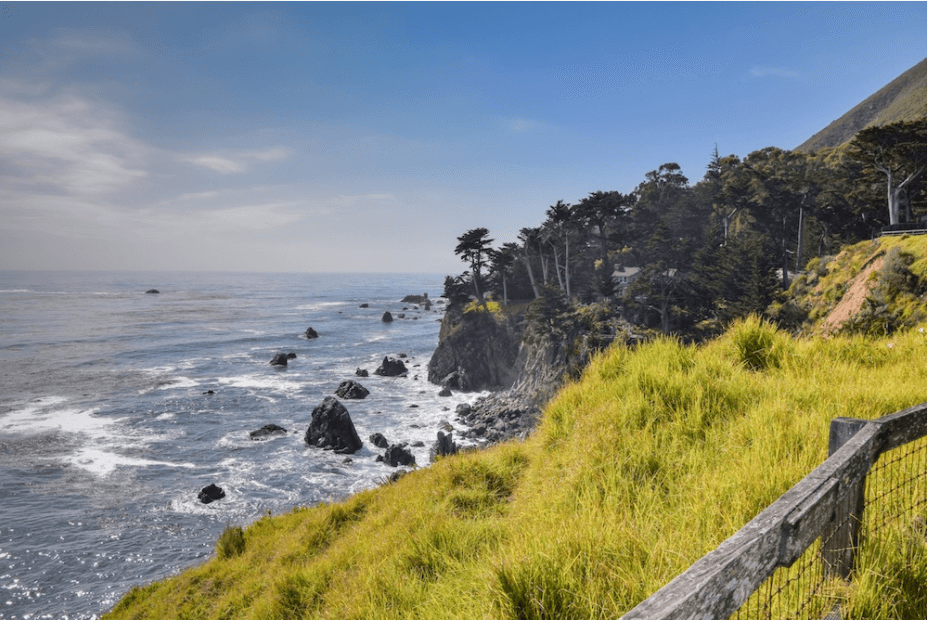
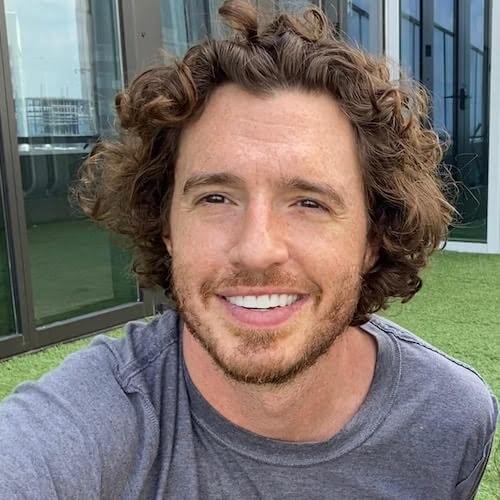
“Remembering to be as self compassionate as I can and praying to the divine that we're all a part of.”
–Aaron
“Prayer, reading, meditation, walking.”
–Karen
“Erratically — which is an ongoing stream of practice to find peace.”
–Charles
“Try on a daily basis to be kind to myself and to realize that making mistakes is a part of the human condition. Learning from our mistakes is a journey. But it starts with compassion and caring. First for oneself.”
–Steve
“Physically: aerobic exercise, volleyball, ice hockey, cycling, sailing. Emotionally: unfortunately I have to work to ‘not care’ about people or situations which may end painfully. Along the lines of ‘attachment is the source of suffering’, so best to avoid it or limit its scope. Sad though because it could also be the source of great joy. Is it worth the risk?“
–Rainer
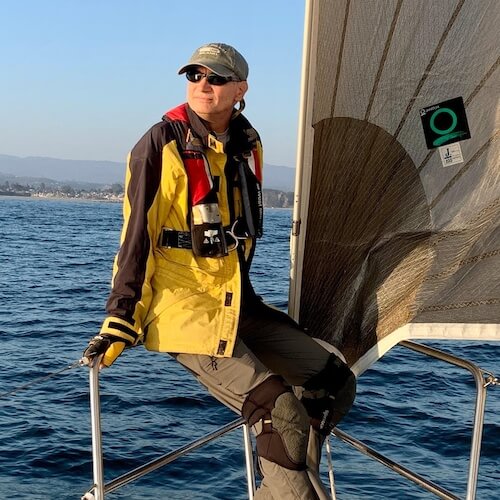

“It's time for my heart to be nurtured on one level yet contained on another. To go easy on me and to allow my feelings to be validated, not judged harshly. On the other hand, to let the heart rule with equanimity and not lead the mind and body around like a master.”
–Suzanne
“I spend time thinking of everything I am grateful for, and I try to develop my ability to express compassion for myself and others without reservation. I take time to do the things I need to do to keep myself healthy and happy. This includes taking experiential workshops, fostering relationships, and participating within groups which have a similar interest to become a more compassionate and fulfilled being.“
–Peter
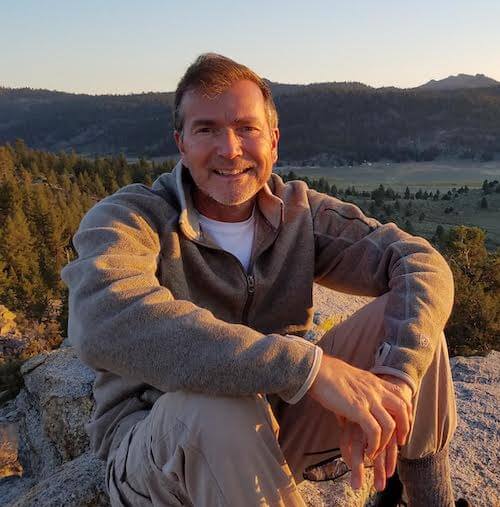
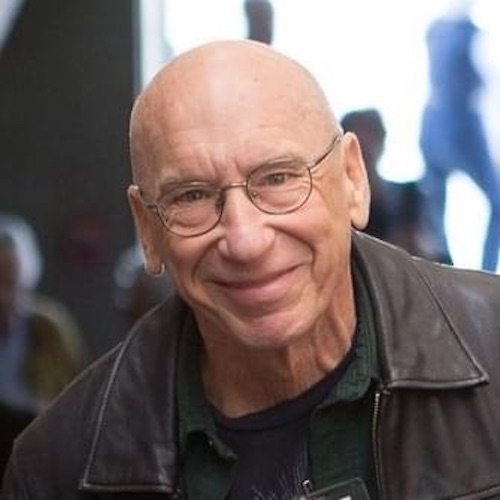
“Self-forgiveness for my own judgments. And oh yeah, coming to Esalen.”
–David B.
“Hmm, this is a tough one! I guess I take care of my heart through fostering relationships with people I feel connected to. Spending quality time with them (whether we're on the phone, through messages/letters, on Zoom, or in-person). Being there for them, listening to them, sharing what's going on with me, my struggles and my successes... like we do in the Esalen weekly Friends of Esalen Zoom sessions!”
–Lori

“I remind myself in many ways of the fact that " Love is all there is!" LOVE is the prize and this one precious life is the stage we get to learn our lessons. I get out into nature, hike, camp, river kayak, fly fish, garden, I create, I dance (not enough!), and I remain grateful for each day, each breath, each moment. Being in the moment, awake, and remembering the gift of life and my feeling of gratitude for all of creation.”
–Steven
“My physical heart by limiting stress and eating a heart-healthy diet. My emotional heart by staying in love with the world and by knowing that all disappointment and loss will pass.“
–David Z.
Today, September 29, is World Heart Day. Strike up a conversation with your own heart and as you feel comfortable, encourage others to do the same. As part of our own transformations and self-care, we sometimes ask for others to illuminate and enliven our hearts or speak our love language.
What if we could do this for ourselves too, even if just for today… or to start a heart practice, forever?

In 2006, neurobiologist and cognitive scientist David Presti was at Esalen giving an evening presentation on the human mind and brain. By that time he’d been teaching Esalen workshops for nine years, leading seminarians deep into the confluence of neuroscience, psychopharmacology and more elusive aspects of mind studies.
“I was talking about near-death and out-of-body experiences, and how it was impossible to explain those things based on what we knew about brain science," David shares. "I cited a couple of recent studies, and one of the people in the room said, ‘You know, the people who did that work are here at Esalen right now, in a conference with [Esalen co-founder] Michael Murphy.’ I was so surprised, and the next day I was in the Lodge for lunch, and I turned around in line and Michael Murphy was right behind me. So I introduced myself and Michael invited me to join in on the last day of their conference, which was sponsored by Esalen’s Center for Theory & Research.”
This fortuitous encounter led David to become an ongoing CTR participant, and his recently published book, Mind Beyond Brain: Buddhism, Science and the Paranormal, is an anthology of case studies with numerous CTR contributors. David’s curiosity about the nature of the mind and reality is palpable, and infuses his Esalen workshops with a spirit of exploration and the sense that open-mindedness and curiosity are indeed an important part of the scientific method.
“I try to think broadly about the limitations of our current ways of studying mind and how we might expand our science in empirical ways,” says David, who teaches neuroscience at UC Berkeley. “Right now the primary way mainstream science studies mind is to study brain and body. There is a rather naïve equation that whatever the mind is just equals something in the brain. Period. There’s nothing beyond that. I think that’s already running into limitations.”
David’s work and interests — whether exploring the therapeutic value of psychedelics or new approaches to phenomena unexplained by current science — have given him the direct opportunity to chip away at those limitations. One project has taken him all the way into monasteries of India, Nepal and Bhutan.

“In the early 1980s, the Dalai Lama proposed that utility might come from a conversation between Tibetan Buddhism and the scientific community, because both are interested in these big questions about the nature of mind and reality — they’re just coming from different world views.” Through a program called Science for Monks and Nuns, David and Kristi Panik, the psychiatrist and meditation teacher who co-leads Esalen workshops with David and is also his wife, have been teaching neuroscience to Buddhist monks and nuns for more than a decade.
“As students, the monastics are very engaged and attentive. These are people who have lived in a monastic setting for 15, 20 years. Their meditation practices have taught them how to keep the mind where they want it to be. They’re also very skilled in logical thinking, because Buddhist philosophy has a big emphasis on logic. If you start with first principles and build up the story step by step, it’s possible to present really complex high-level scientific material to them in a short amount of time. And they retain it.”
“When we look at how we can study aspects of experience that seem to transcend the person in some way, that’s all very familiar territory in the Buddhist tradition,” David observes. Phenomena including telepathy and out-of-body experiences that we often call paranormal are known as siddhis in Eastern traditions, which utilize millennia-old traditions of observing the mind. “Buddhism and other Asian philosophical traditions don’t operate from the assumption that there’s a world out there independent from our minds. From the beginning they honor a kind of enfolding of mind and world, and the way they gather their data is through introspective processes, going deeply within the mental experience. When Western science can acknowledge this perspective, our science will be expanded. I think that’s one of the big messages that can come from this conversation we’re having with Buddhism.”
Learn more about Mind, Brain, Consciousness: Toward a Revolution in Mind Science and Psychedelic Integration, co-led with Michael Pollan and others.


“Remembering to be as self compassionate as I can and praying to the divine that we're all a part of.”
–Aaron
“Prayer, reading, meditation, walking.”
–Karen
“Erratically — which is an ongoing stream of practice to find peace.”
–Charles
“Try on a daily basis to be kind to myself and to realize that making mistakes is a part of the human condition. Learning from our mistakes is a journey. But it starts with compassion and caring. First for oneself.”
–Steve
“Physically: aerobic exercise, volleyball, ice hockey, cycling, sailing. Emotionally: unfortunately I have to work to ‘not care’ about people or situations which may end painfully. Along the lines of ‘attachment is the source of suffering’, so best to avoid it or limit its scope. Sad though because it could also be the source of great joy. Is it worth the risk?“
–Rainer


“It's time for my heart to be nurtured on one level yet contained on another. To go easy on me and to allow my feelings to be validated, not judged harshly. On the other hand, to let the heart rule with equanimity and not lead the mind and body around like a master.”
–Suzanne
“I spend time thinking of everything I am grateful for, and I try to develop my ability to express compassion for myself and others without reservation. I take time to do the things I need to do to keep myself healthy and happy. This includes taking experiential workshops, fostering relationships, and participating within groups which have a similar interest to become a more compassionate and fulfilled being.“
–Peter


“Self-forgiveness for my own judgments. And oh yeah, coming to Esalen.”
–David B.
“Hmm, this is a tough one! I guess I take care of my heart through fostering relationships with people I feel connected to. Spending quality time with them (whether we're on the phone, through messages/letters, on Zoom, or in-person). Being there for them, listening to them, sharing what's going on with me, my struggles and my successes... like we do in the Esalen weekly Friends of Esalen Zoom sessions!”
–Lori

“I remind myself in many ways of the fact that " Love is all there is!" LOVE is the prize and this one precious life is the stage we get to learn our lessons. I get out into nature, hike, camp, river kayak, fly fish, garden, I create, I dance (not enough!), and I remain grateful for each day, each breath, each moment. Being in the moment, awake, and remembering the gift of life and my feeling of gratitude for all of creation.”
–Steven
“My physical heart by limiting stress and eating a heart-healthy diet. My emotional heart by staying in love with the world and by knowing that all disappointment and loss will pass.“
–David Z.
Today, September 29, is World Heart Day. Strike up a conversation with your own heart and as you feel comfortable, encourage others to do the same. As part of our own transformations and self-care, we sometimes ask for others to illuminate and enliven our hearts or speak our love language.
What if we could do this for ourselves too, even if just for today… or to start a heart practice, forever?

In 2006, neurobiologist and cognitive scientist David Presti was at Esalen giving an evening presentation on the human mind and brain. By that time he’d been teaching Esalen workshops for nine years, leading seminarians deep into the confluence of neuroscience, psychopharmacology and more elusive aspects of mind studies.
“I was talking about near-death and out-of-body experiences, and how it was impossible to explain those things based on what we knew about brain science," David shares. "I cited a couple of recent studies, and one of the people in the room said, ‘You know, the people who did that work are here at Esalen right now, in a conference with [Esalen co-founder] Michael Murphy.’ I was so surprised, and the next day I was in the Lodge for lunch, and I turned around in line and Michael Murphy was right behind me. So I introduced myself and Michael invited me to join in on the last day of their conference, which was sponsored by Esalen’s Center for Theory & Research.”
This fortuitous encounter led David to become an ongoing CTR participant, and his recently published book, Mind Beyond Brain: Buddhism, Science and the Paranormal, is an anthology of case studies with numerous CTR contributors. David’s curiosity about the nature of the mind and reality is palpable, and infuses his Esalen workshops with a spirit of exploration and the sense that open-mindedness and curiosity are indeed an important part of the scientific method.
“I try to think broadly about the limitations of our current ways of studying mind and how we might expand our science in empirical ways,” says David, who teaches neuroscience at UC Berkeley. “Right now the primary way mainstream science studies mind is to study brain and body. There is a rather naïve equation that whatever the mind is just equals something in the brain. Period. There’s nothing beyond that. I think that’s already running into limitations.”
David’s work and interests — whether exploring the therapeutic value of psychedelics or new approaches to phenomena unexplained by current science — have given him the direct opportunity to chip away at those limitations. One project has taken him all the way into monasteries of India, Nepal and Bhutan.

“In the early 1980s, the Dalai Lama proposed that utility might come from a conversation between Tibetan Buddhism and the scientific community, because both are interested in these big questions about the nature of mind and reality — they’re just coming from different world views.” Through a program called Science for Monks and Nuns, David and Kristi Panik, the psychiatrist and meditation teacher who co-leads Esalen workshops with David and is also his wife, have been teaching neuroscience to Buddhist monks and nuns for more than a decade.
“As students, the monastics are very engaged and attentive. These are people who have lived in a monastic setting for 15, 20 years. Their meditation practices have taught them how to keep the mind where they want it to be. They’re also very skilled in logical thinking, because Buddhist philosophy has a big emphasis on logic. If you start with first principles and build up the story step by step, it’s possible to present really complex high-level scientific material to them in a short amount of time. And they retain it.”
“When we look at how we can study aspects of experience that seem to transcend the person in some way, that’s all very familiar territory in the Buddhist tradition,” David observes. Phenomena including telepathy and out-of-body experiences that we often call paranormal are known as siddhis in Eastern traditions, which utilize millennia-old traditions of observing the mind. “Buddhism and other Asian philosophical traditions don’t operate from the assumption that there’s a world out there independent from our minds. From the beginning they honor a kind of enfolding of mind and world, and the way they gather their data is through introspective processes, going deeply within the mental experience. When Western science can acknowledge this perspective, our science will be expanded. I think that’s one of the big messages that can come from this conversation we’re having with Buddhism.”
Learn more about Mind, Brain, Consciousness: Toward a Revolution in Mind Science and Psychedelic Integration, co-led with Michael Pollan and others.


“Remembering to be as self compassionate as I can and praying to the divine that we're all a part of.”
–Aaron
“Prayer, reading, meditation, walking.”
–Karen
“Erratically — which is an ongoing stream of practice to find peace.”
–Charles
“Try on a daily basis to be kind to myself and to realize that making mistakes is a part of the human condition. Learning from our mistakes is a journey. But it starts with compassion and caring. First for oneself.”
–Steve
“Physically: aerobic exercise, volleyball, ice hockey, cycling, sailing. Emotionally: unfortunately I have to work to ‘not care’ about people or situations which may end painfully. Along the lines of ‘attachment is the source of suffering’, so best to avoid it or limit its scope. Sad though because it could also be the source of great joy. Is it worth the risk?“
–Rainer


“It's time for my heart to be nurtured on one level yet contained on another. To go easy on me and to allow my feelings to be validated, not judged harshly. On the other hand, to let the heart rule with equanimity and not lead the mind and body around like a master.”
–Suzanne
“I spend time thinking of everything I am grateful for, and I try to develop my ability to express compassion for myself and others without reservation. I take time to do the things I need to do to keep myself healthy and happy. This includes taking experiential workshops, fostering relationships, and participating within groups which have a similar interest to become a more compassionate and fulfilled being.“
–Peter


“Self-forgiveness for my own judgments. And oh yeah, coming to Esalen.”
–David B.
“Hmm, this is a tough one! I guess I take care of my heart through fostering relationships with people I feel connected to. Spending quality time with them (whether we're on the phone, through messages/letters, on Zoom, or in-person). Being there for them, listening to them, sharing what's going on with me, my struggles and my successes... like we do in the Esalen weekly Friends of Esalen Zoom sessions!”
–Lori

“I remind myself in many ways of the fact that " Love is all there is!" LOVE is the prize and this one precious life is the stage we get to learn our lessons. I get out into nature, hike, camp, river kayak, fly fish, garden, I create, I dance (not enough!), and I remain grateful for each day, each breath, each moment. Being in the moment, awake, and remembering the gift of life and my feeling of gratitude for all of creation.”
–Steven
“My physical heart by limiting stress and eating a heart-healthy diet. My emotional heart by staying in love with the world and by knowing that all disappointment and loss will pass.“
–David Z.
Today, September 29, is World Heart Day. Strike up a conversation with your own heart and as you feel comfortable, encourage others to do the same. As part of our own transformations and self-care, we sometimes ask for others to illuminate and enliven our hearts or speak our love language.
What if we could do this for ourselves too, even if just for today… or to start a heart practice, forever?